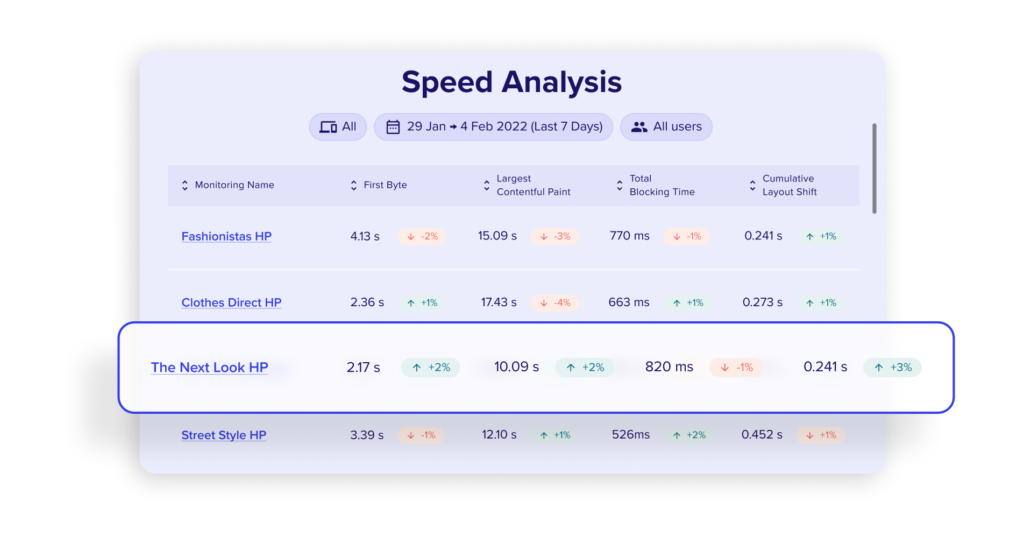Web performance metrics are essential to the success of any online business. They provide valuable data about user experience, site speed, and overall website functionality. Site speed, in particular, is a crucial performance metric.
It influences user engagement and conversion rates. A high-performing website with excellent site speed fosters improved customer satisfaction and increased conversions. Web performance metrics have a significant impact on search engine optimization (SEO).
Search engines like Google factor in site speed and other performance metrics when ranking pages. Websites with fast load time and excellent performance metrics often rank higher in search engine results, leading to increased visibility and more organic traffic.
Why Tracking Metrics is Essential for Website Monitoring
Website monitoring involves tracking and analyzing web performance metrics like load time, time to first byte, and bounce rate. Tracking these metrics is crucial for maintaining optimal user experience, ensuring website availability, and detecting potential issues before they escalate. For instance, tracking page load speed can help businesses identify performance bottlenecks and take proactive measures to optimize their sites.
Additionally, monitoring metrics like time to first byte, the server response time, provides visibility into the responsiveness of a web server. A slow server response time can negatively impact the site speed and overall user experience. By tracking these metrics, businesses can take necessary actions to improve server response time and enhance site speed.
Our 6-minute product shows you how Speed Analysis, part of Contentsquare’s Find & Fix offer can help your business
How to Identify Which Website Performance Metrics to Track
Identifying the right web performance metrics to track is crucial for effective website monitoring. The selection of metrics should align with the business’s specific goals and objectives. Several key performance indicators (KPIs) can provide valuable insights into website performance, including load time, server response time, and time to first byte. User engagement metrics, such as bounce rate and conversion rate, are also essential.
A high bounce rate may indicate poor user experience or irrelevant content, while the conversion rate measures the effectiveness of marketing strategies and website design. Additionally, metrics like first contentful paint, time to interactive, and page size can provide further insights into site speed and user experience.
Tracking these metrics can help businesses optimize their websites for improved performance and higher conversion rates.
Top 10 website performance metrics
Understanding website performance metrics is crucial in the digital marketing realm. These metrics, including site speed, load time, page load speed, server response time, time to first byte, first contentful paint, time to interactive, page size, bounce rate, and conversion rate, are key performance indicators (KPIs).
They provide insights into user behavior, site functionality, and overall performance, allowing businesses to identify areas for improvement and measure the effectiveness of their strategies. The importance of these metrics, especially site speed and load time, cannot be overstated.
They offer a comprehensive view of a website’s performance, enabling businesses to make data-driven decisions. For instance, a high bounce rate might indicate that users are not finding what they’re looking for, while a low conversion rate could signal a need for better call-to-actions. By closely monitoring these metrics, businesses can continually optimize their websites for better performance and higher returns on investment.
Our 6-minute product shows you how Speed Analysis, part of Contentsquare’s Find & Fix offer can help your business
Furthermore, these metrics can also help businesses understand their audience better. For example, the bounce rate and conversion rate can provide insights into customer behavior. This information can be instrumental in tailoring content and design to meet the needs and preferences of the target audience.
Page speed and load time
Page speed and load time, including server response time, time to first byte, first contentful paint, and time to interactive, are among the most critical website performance metrics. They refer to the amount of time it takes for a webpage to load fully. In today’s fast-paced digital world, users expect websites to load quickly. A slow-loading website, with a high page size, can lead to user frustration, increased bounce rates, and decreased conversion rates. The importance of page speed and load time extends beyond user experience.
Search engines like Google also consider these metrics when ranking websites. A website that loads quickly is likely to rank higher in search engine results pages (SERPs), leading to increased visibility and organic traffic. Therefore, optimizing page speed and load time can also contribute to improved SEO performance.
There are several ways to improve page speed and load time. These include reducing the page size, enabling browser caching, minimizing HTTP requests, and using a content delivery network (CDN). Regularly monitoring page speed and load time can help businesses identify issues and implement necessary changes promptly. In conclusion, page speed and load time are not just indicators of website performance, but they also play a significant role in user satisfaction and SEO. By focusing on improving these metrics, businesses can provide a better user experience, improve their search engine rankings, and ultimately, drive more conversions.
Our 6-minute product shows you how Speed Analysis, part of Contentsquare’s Find & Fix offer can help your business

